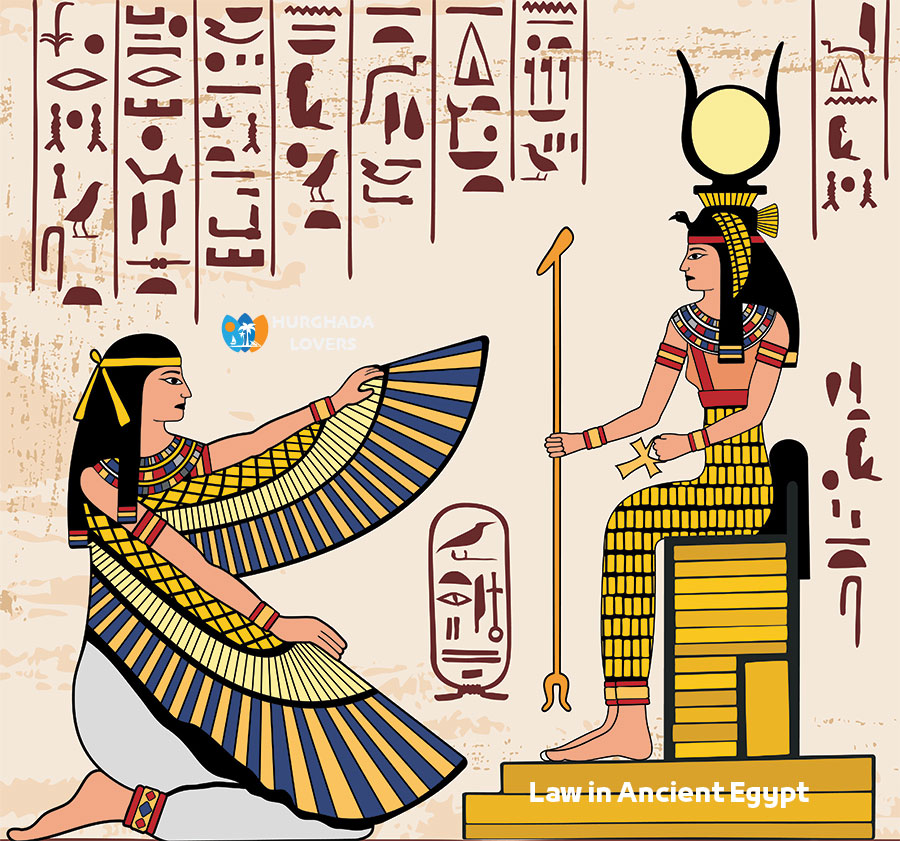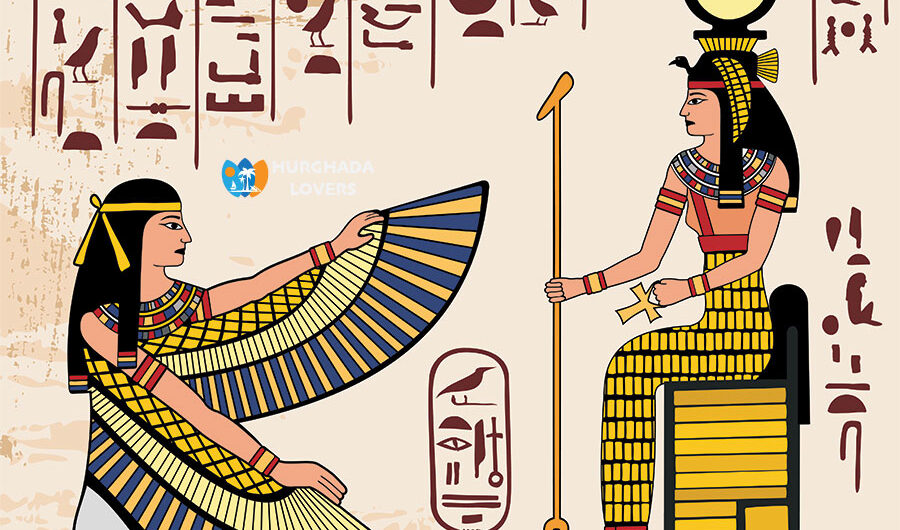Law in Ancient Egypt | Facts What are the main laws in Pharaonic Civilization, Crime & Punishment, The Legal System, Egyptians sanctified justice, History The laws of Maat and more about Ancient Egypt History.
Discover how the judiciary, right and justice were in Pharaonic Egypt, the legal institutions and courts of crime and punishment, the law of morals and the facts of the laws of Maat and the judiciary in the Pharaonic civilization used by the ancient Egyptians, the Pharaohs, and more.
History of Egyptian laws and judiciary in the Pharaonic civilization. Facts and secrets of the general principles of Egyptian pharaonic law, how the legal institutions were the courts, and more to know about the pharaohs.
Law in ancient Egypt:
Views of the Law in Ancient Egypt appeared in Tomb of Rekhmire – TT100 the in Tombs of Sheikh Abdel Gorna “Tombs of The Nobles in Luxor “Thebes” | The Pharaonic Tombs from Thebes“, the minister of King Thutmose III from Eighteenth Dynasty of Egypt during The New Kingdom, the image of the minister appeared, and in front of him were four furnished mats, and on top of each of them were drawn ten rectangular objects representing forty leather wraps on which the articles of the Law in Ancient Egypt that the minister used to use in his judgment for people were inscribed, and this means that there are many legal codes that have been damaged by time.
No detailed legal codes appeared in Egypt. Rather, legal documents and legal ownership decrees appeared. The Law in Ancient Egypt was in effect according to customs, documents and decrees. Certainly it existed, but writing it on Papyrus or leather as in Industry in ancient Egypt made it perishable and extinct. The documents included buying and selling, assignment, rent, marriage and divorce…
Throughout Egyptian history, we hear trials of royal wives for crimes they committed, bribery personalities and Female Pharaohs, or thieves “Ancient Egyptian Grave Robbers” who committed thefts, most of which were from the Egyptian Tombs of kings as in Valley of the Kings and Valley of the Queens, but each case was examined within the framework of its circumstances, and without there being organized rules that have a continuity character.
We also do not know lawyers who professionally defended the defendants, but there may have been a group of scribes with experience in legal affairs, such as charters in court or real estate notaries in our modern era.
What is the primary source of civil Law in Ancient Egypt?
- The customs that were preserved by the The Egyptian Gods, Egyptian Pharaohs kings, the political system as in Ancient Egyptian Government, and society. Maat represents the symbol of justice, and there is a reference to the laws of the God Thoth.
- Kings’ laws: These include their orders, teachings, and decrees.
- Legal documents.
- Reforms and their decrees, such as the reforms of King Horemheb, which referred to courts and courts.
What is the origin of law in Ancient Egypt?
King Horemheb, the last king of the Eighteenth Dynasty (1328-1298) BC, issued a decree that included a number of legal matters, namely:
- The godly priests, whose title (and title) means (purified), and whose responsibility it is to judge between people, are free to hold their courts at any time and place they choose, especially in temples.
- They are provided with verbal instructions and laws so that they become like a (daily record), i.e. (a cat bit).
- Warning them of suspicions and not accepting rewards and gifts.
- Warning the court judges (Sid Su Nokpet) to establish justice among people and that whoever releases criminals shall be sentenced to death.
The Egyptian Temples were used as places to file complaints, and courts were held in them in the Nineteenth Dynasty of Egypt, which gave the High Priest of Amun more influence, although the city (courts) also existed as in Geography of ancient Egypt.
There was equality between men and women of all classes (except for slaves) in the Penal Code and Civil Law, but equality does not always exist in all classes and cases, and the Egyptian, despite the existence of the inheritance Law in Ancient Egypt, wrote his will and took it as in Ancient Egyptian religion.
The common Law in Ancient Egypt required the prosecution of those who despised the monarchy or those who escaped from forced labor. There were complex judicial systems in accusation and appeal, and there were (funeral laws) to regulate the life of the dead, burial, and offerings to the dead.
There was a general criminal law and a penal code. “We also received some provisions from the Penal Code in Papyrus and Sankar, where death was prescribed for the adulteress and the adulterer, by drowning or burning. In her narration about a young man’s relationship with a priest’s woman, the young man was devoured by a crocodile made by the priest himself.
And that the playful woman was taken to a square north of the palace, where she was publicly burned and her ashes were thrown into the river.
What were the laws called in ancient Egypt?
Diderot al-Sicilian referred to the existence of Law in Ancient Egypt written in eight books that were placed next to the judges. Diderot mentioned some of these laws, including:
- The death penalty for anyone who commits one of these crimes (perjury, failure to provide assistance to someone who is subject to death while he is able to help, premeditated murder).
- Amputation of the hand of anyone who commits one of these crimes (forging a measure or scale, forging seals and money, cheating on transactions, a clerk who alters the texts of public records).
- Flogging with whips and deprivation of food for anyone who commits one of these crimes (failure to report a crime, accusing an innocent of a crime, parents who kill their children in public).
- Castration for anyone who practices rape.
- Flogging with a thousand lashes for the adulterer and the stump of the nose of the adulteress.
The truth is that through this information and the information of the Egyptian texts on crimes and punishments, we notice that there is a kind of great cruelty in the criminal Law in Ancient Egypt.
It was used in some cases, such as leaving the convict to be eaten by crocodiles, and by exhorting the convicts, he might obtain a special privilege by allowing him to commit suicide, and we hear of a number of those who were punished by cutting off their organs or amputating them, then they were put in hard labor in special concentration camps.
The custom in Law in Ancient Egyptis similar to the law of Hammurabi with regard to compensation for thefts by paying the stolen thing multiplied several times.” We find such a custom in the oldest Roman laws.
What type of law is used in Ancient Egypt?
But the possibilities of having a clear international Law in Ancient Egypt were difficult in Egypt. For the first time, the impossibility of a general international law.
Pharaoh is the only representative on earth of the Creator God, and his son who is from his progeny, and therefore he himself is a god. And creation All of them are in his hands legally, they do not represent at the parties only the initial emptiness, after the Creator God expelled them to him.
It is the responsibility of Pharaoh to subdue them and spread civilization among them.
However, actual events have undertaken the task of disproving these theories in a stinging and bitter manner. Even at the height of the empire’s prosperity, when King Amenhotep II and King Thutmose IV still retained their vitality as fierce fighters in the wake of their great victories, great foreign peoples lived at the northern borders of the Egyptian possessions.
Peoples who were well organized, highly civilized and well known by the Egyptians: they are the field people first, then the Babylonians and Assyrians, headed by the Hittites, whose threat looms on the horizon, and they soon become feared. And all were dominated by the Babylonian culture, whose national language, Akkadian, succeeded in eventually establishing itself as the international language of the Near East.
What was the legal system in Egyptian civilization?
The legal institutions of the pharaohs:
Courts: There were two types of courts:
Religious courts:
Its headquarters were in the temples, including the Mortuary Temples of Memphis, especially the temple of God Ptah, and the priest was the judge who ruled according to the Law in Ancient Egypt of the goddess (Maat), and he was called (the listener in the temple of Ptah) or (the judge of the temple of Ptah), which is called in The ancient Egyptian Pharaonic language (Sdm) meaning (the listener) or (The listener).
A (legal text) was written on the northern and southern walls in the second room of the structure of the tomb of the clerk of the treasury of the Temple of Ptah, and his name was (Moses) from the reign of King Ramses II, north of Saqqara.
This text was known as (The Case of the Hundred Years Dispute), and its summary is as follows: There was an old dispute over an inheritance between the mother of (Moses) whose name was (Nabet-Nofret) and a person named (Khai), and this case remained subject to the courts until (Moses) appealed the verdict And presented to the judges again brought witnesses.
Among them was the shepherd of the goats (Miss Men) and the witness (Baba), who is the priest of the temple of Ptah and others who supported the case of the plaintiff and took the oath several times and said that if they appeared to be liars, then their noses and ears would be cut off and they would be sent to Kush (in Sudan).
This text referred to the presence of the court inside the temple of Ptah. For a long time and that it can be appealed and that there is a tradition of the presence of witnesses and the existence of specific penalties for false testimony.
Civil Courts:
Law in Ancient Egypt. It was called (the city court), which consisted of judges and was headed by the employees of the regions, while in the capital it was headed by (the minister).
There were special courts formed by order of the pharaoh. The investigation was carried out first, and the judges examined and scrutinized the investigation, then issued a brief decision stating that the accused was on the side of truth or on the side of falsehood, and then came the confession of the accused and sentencing him.
Book of Contracts:
Law in Ancient Egypt. Marriage contracts were written by contract writers since the era of the New Kingdom, especially on papyrus. The marriage contract included the following:
- The husband’s undertaking, in which he writes his saying: I have taken you as a wife…etc
- Determining the dowry that the husband pays as a gift to his wife, which is usually a quantity of silver
- Husband’s obligations with his wife’s right to feed and clothe he
- A list of the wife’s possessions, which she brings with her, apparently from her father’s house
- The husband’s commitment that if he leaves his wife, he must compensate her and her children and return her property that she brought.
Sources Law in Ancient Egypt: Book of Egyptian Civilization, Khazal Al-Majidi
Hurghada Lovers best Tour Operator to provide daily tours to visit the Tourist attractions of Luxor by Hurghada to Luxor Day Trips and Cairo by Hurghada to Pyramids Day Trips to discover the secrets. Book online when you come to Hurghada, El Gouna, Sahl Hashish, Makadi Bay, Soma Bay.


